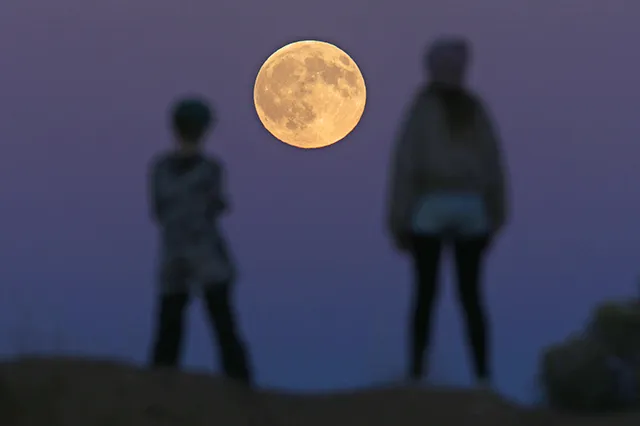BEND, Ore. — Central Oregon residents were treated to a spectacular celestial display Monday night as a brilliant Harvest Supermoon illuminated the sky, appearing larger and brighter than usual.
Among those taking in the show were Kingston Fortier, 7, and his sister Evelyn, 10, of Bend. The siblings watched in awe as the glowing moon rose above the horizon east of Millican, joined by their family for the evening’s special event.
This particular full moon—known as the Harvest Moon—occurs closest to the autumn equinox and has long been celebrated for its luminous beauty and cultural significance. Farmers historically relied on its bright light to extend work into the night during harvest season, a tradition that gave the moon its name.
Also Read
What made Monday night’s moon even more captivating was its classification as a supermoon—a phenomenon that happens when the moon’s orbit brings it to its closest point to Earth, or perigee. At that distance, the moon can appear up to 14% larger and 30% brighter than when it’s at its farthest point, known as apogee.
As the glowing orb lifted above the eastern horizon, skywatchers across Oregon shared photos and observations of the striking view. The crisp autumn air and clear skies made for near-perfect viewing conditions.
Astrophotographer Andy Tullis captured the moment for The Bulletin, showing the Fortier children silhouetted against the bright lunar rise — a reminder of the timeless wonder that the night sky can inspire.
Astronomers note that this particular event marks one of the year’s most striking moonrises. While supermoons are relatively common, their combination with seasonal full moons like the Harvest Moon creates especially memorable scenes for stargazers and photographers alike.
According to NASA, this supermoon was the fourth and final of 2025. The next two will grace the sky on November 5 and December 4, offering Oregon stargazers two more opportunities before year’s end to witness the moon in all its close-up brilliance.
For those who missed this week’s celestial show, astronomers recommend finding a dark, open viewing spot during future full moons, far from city lights. Whether viewed through binoculars, a telescope, or simply with the naked eye, the moon’s glow continues to captivate skywatchers of all ages—just as it did for the Fortier family under Oregon’s autumn sky.












